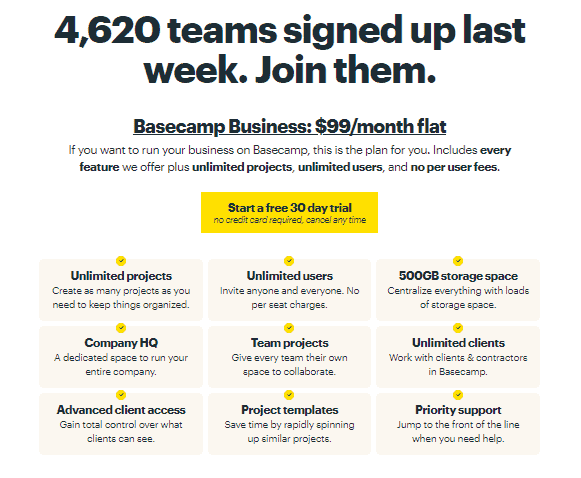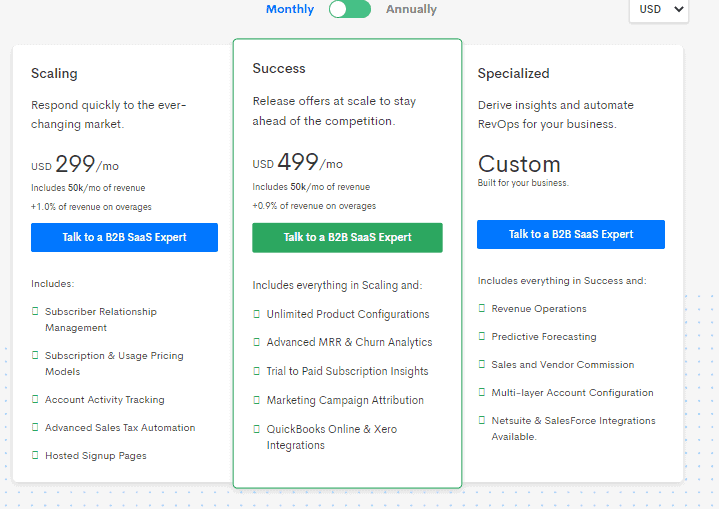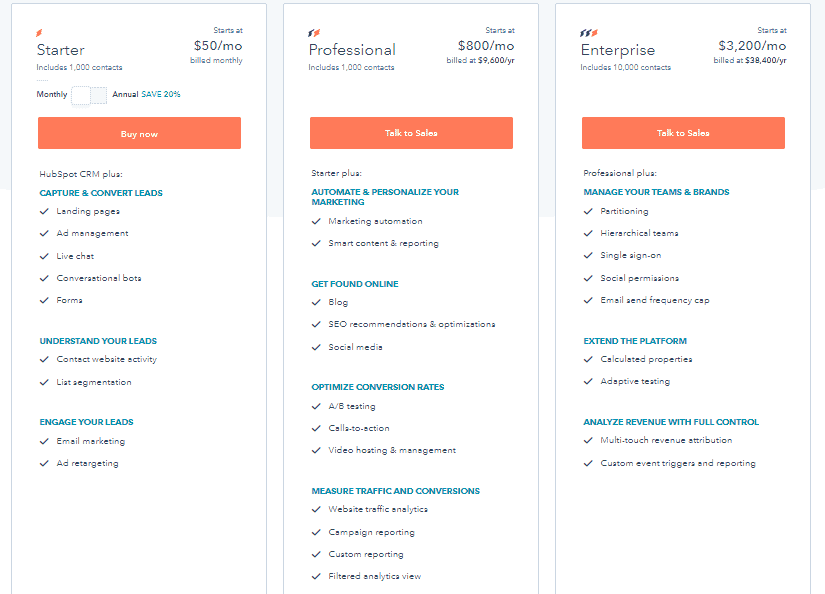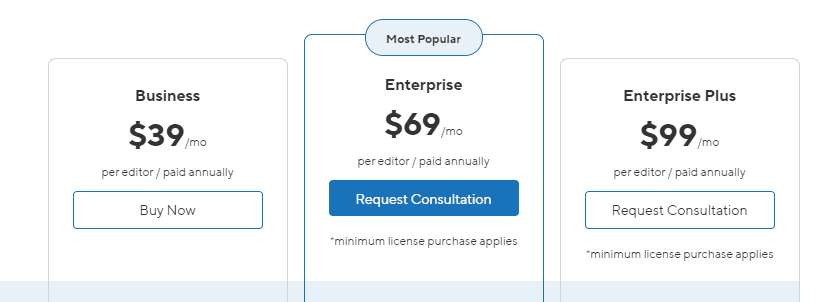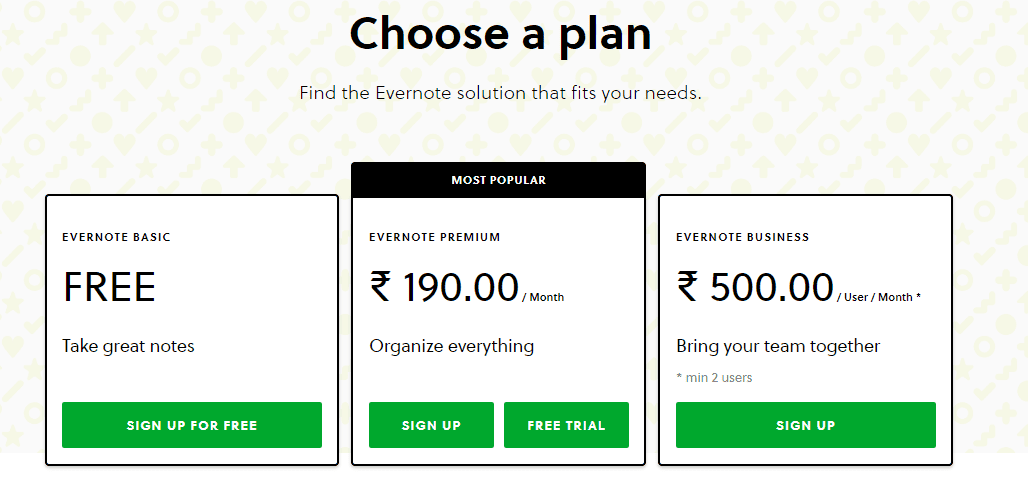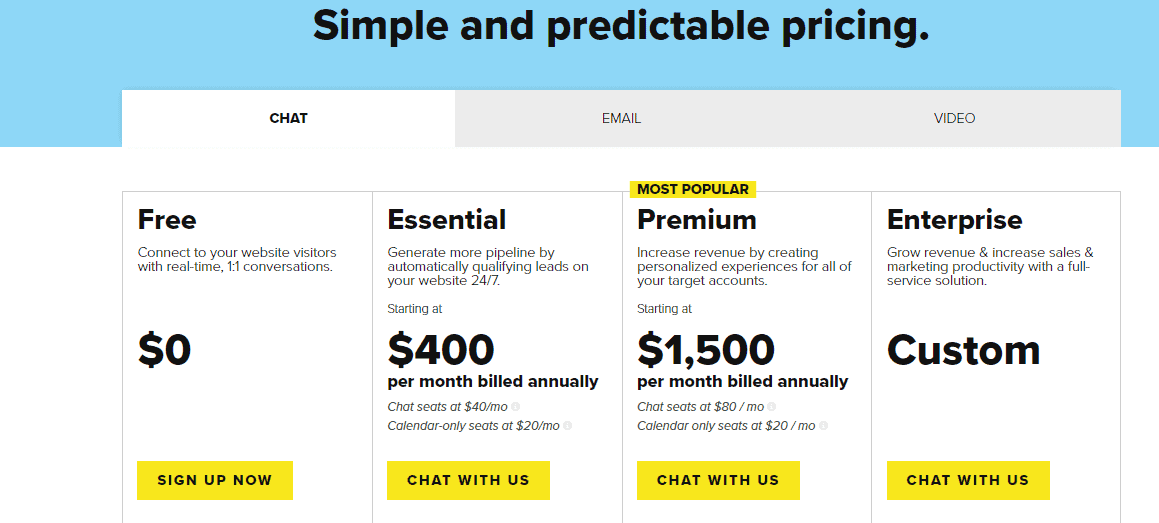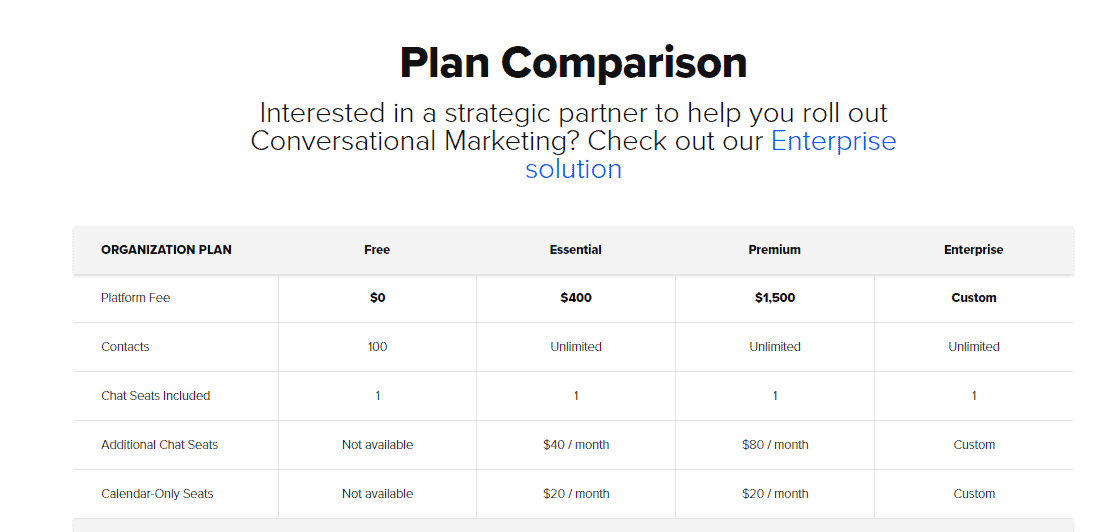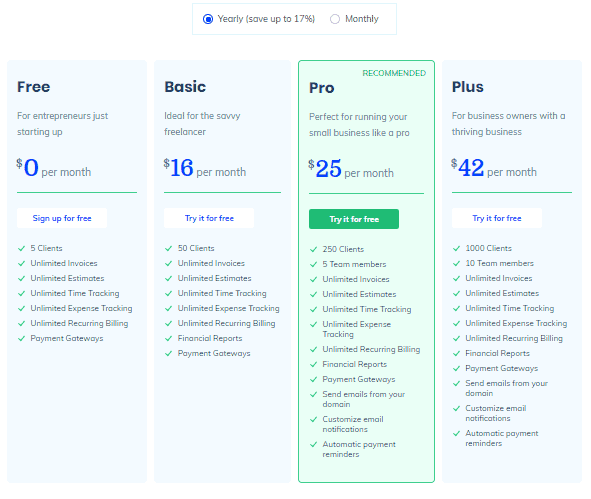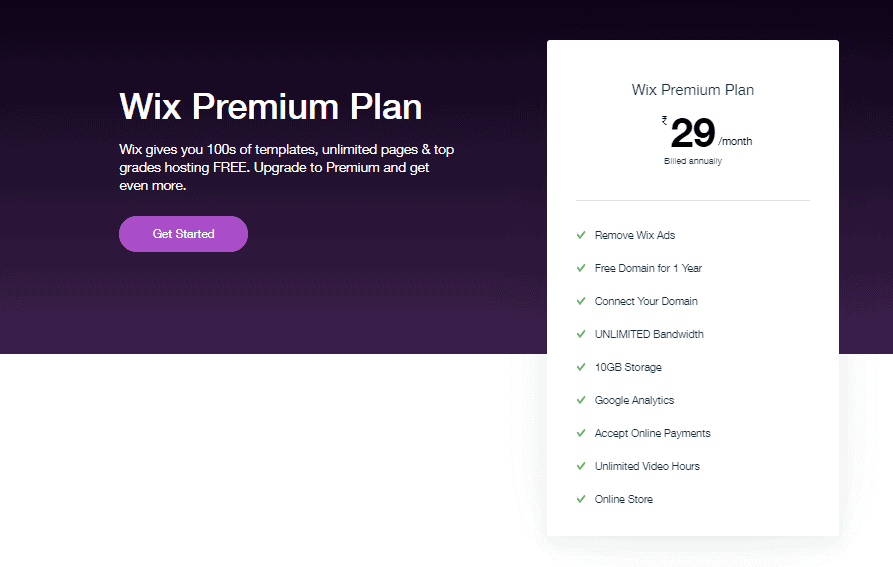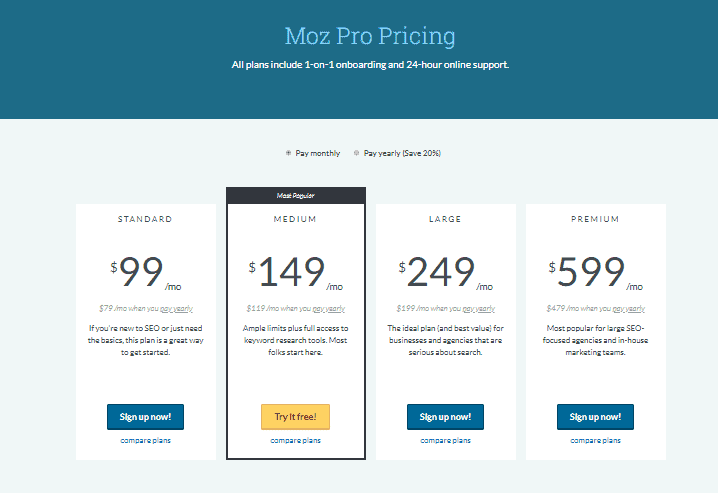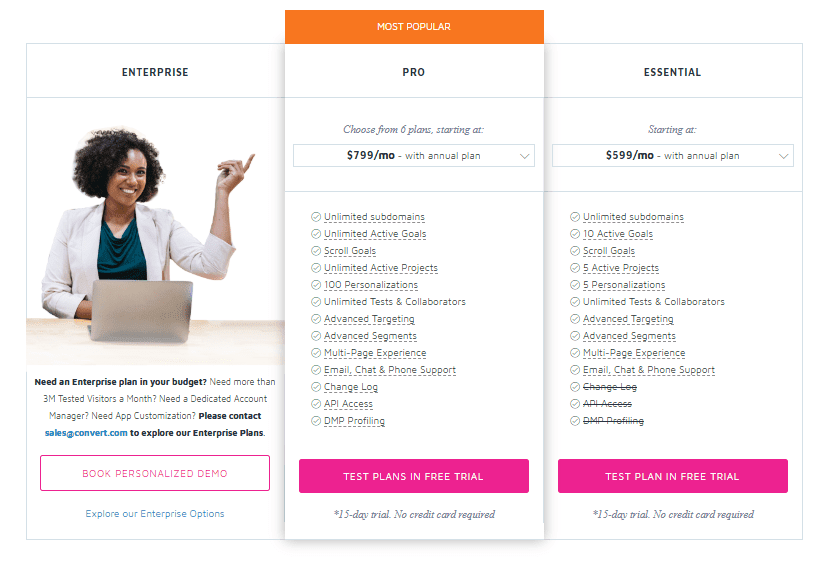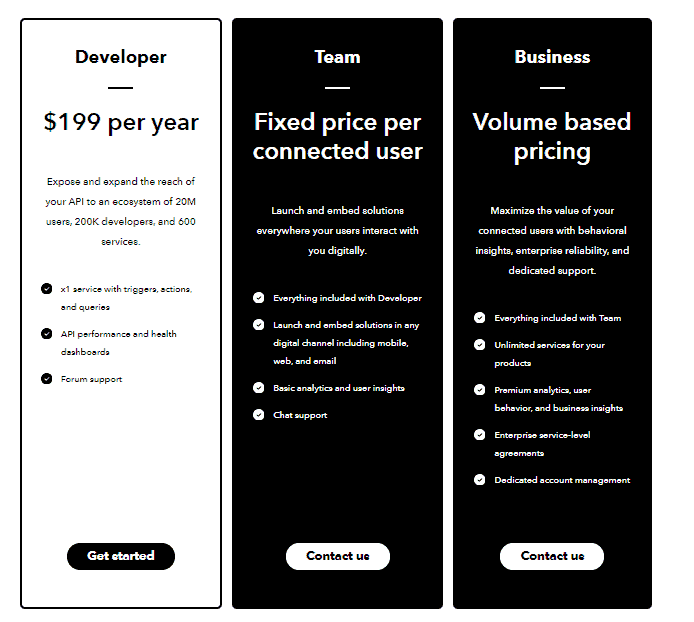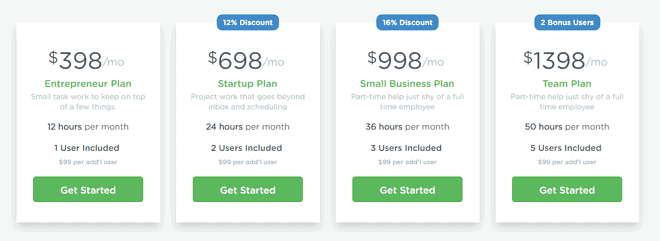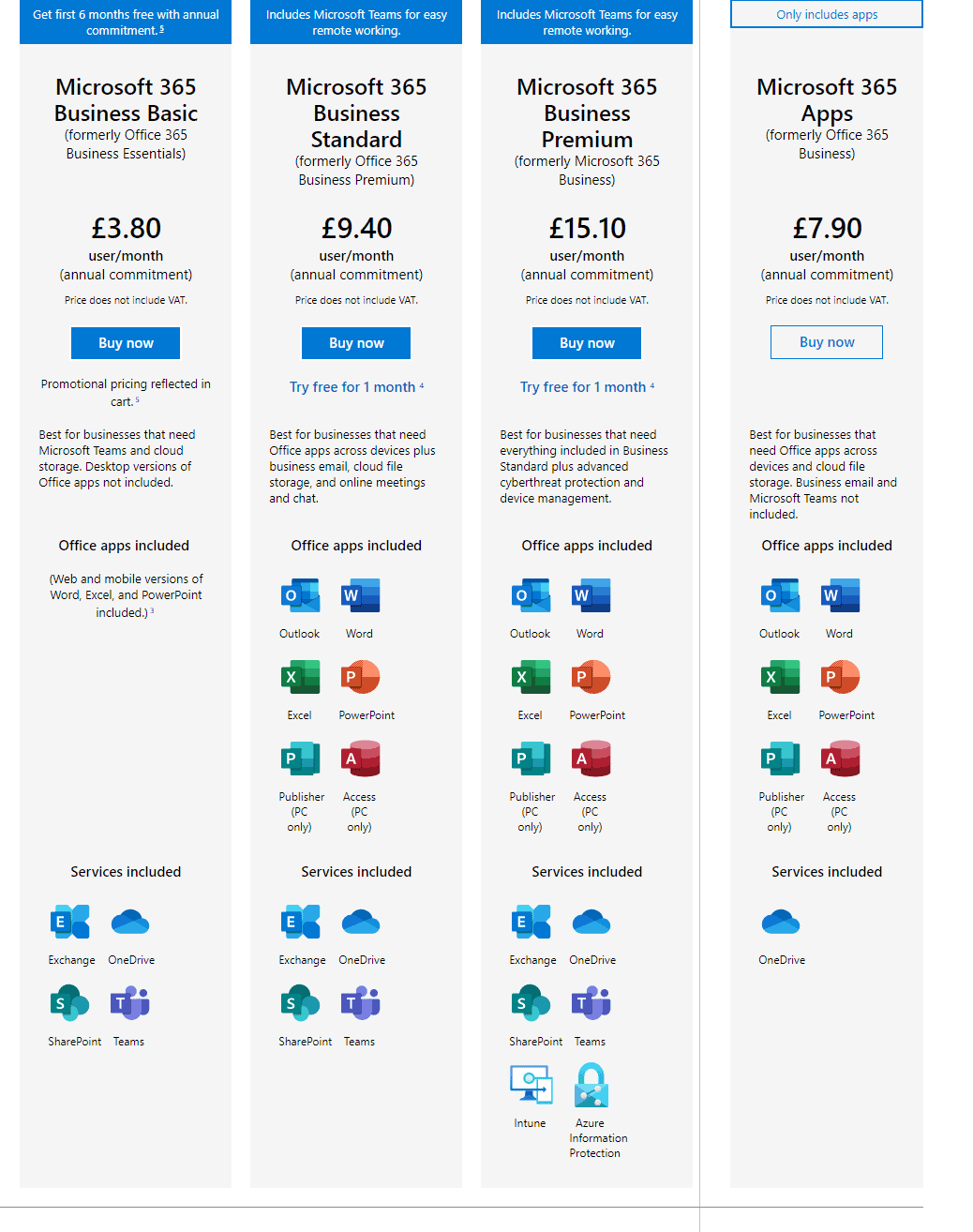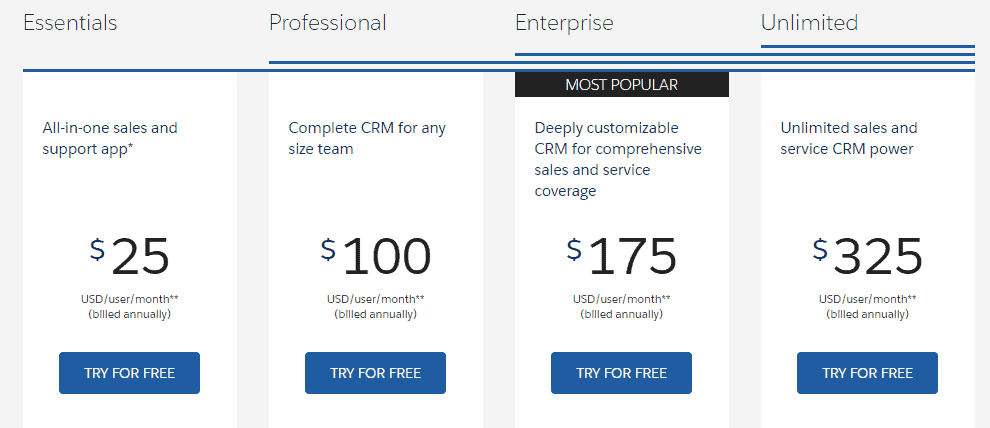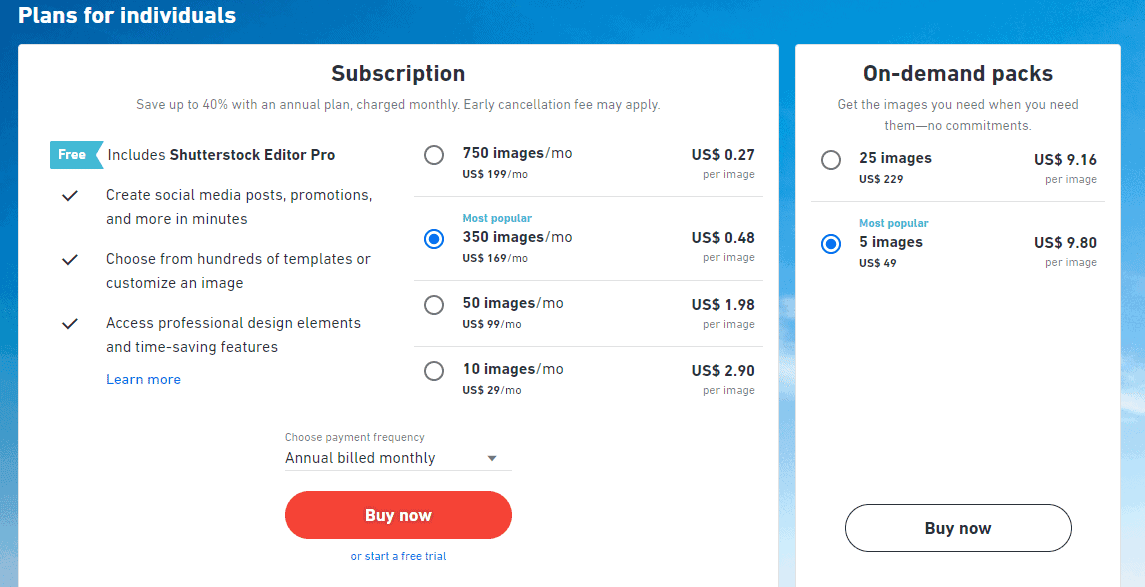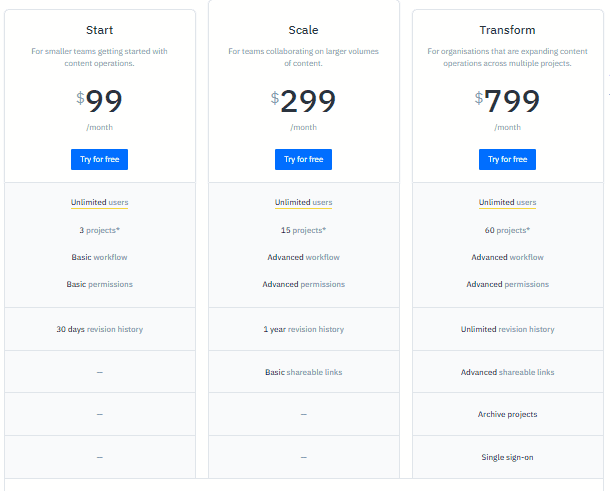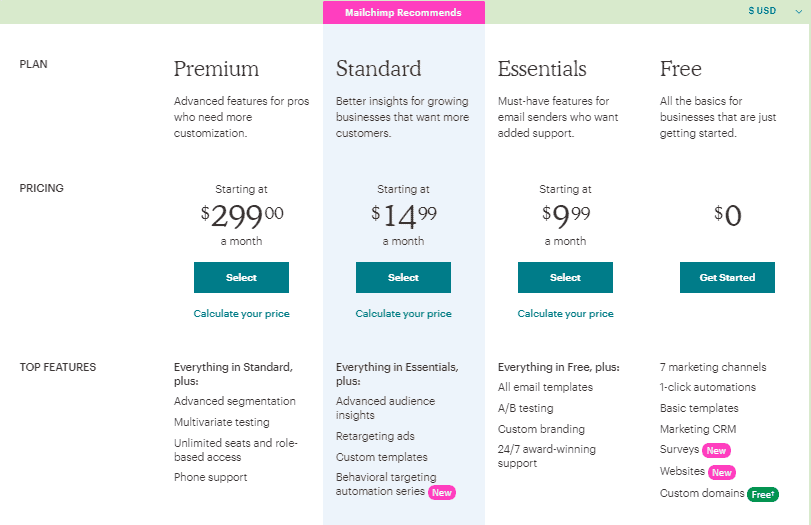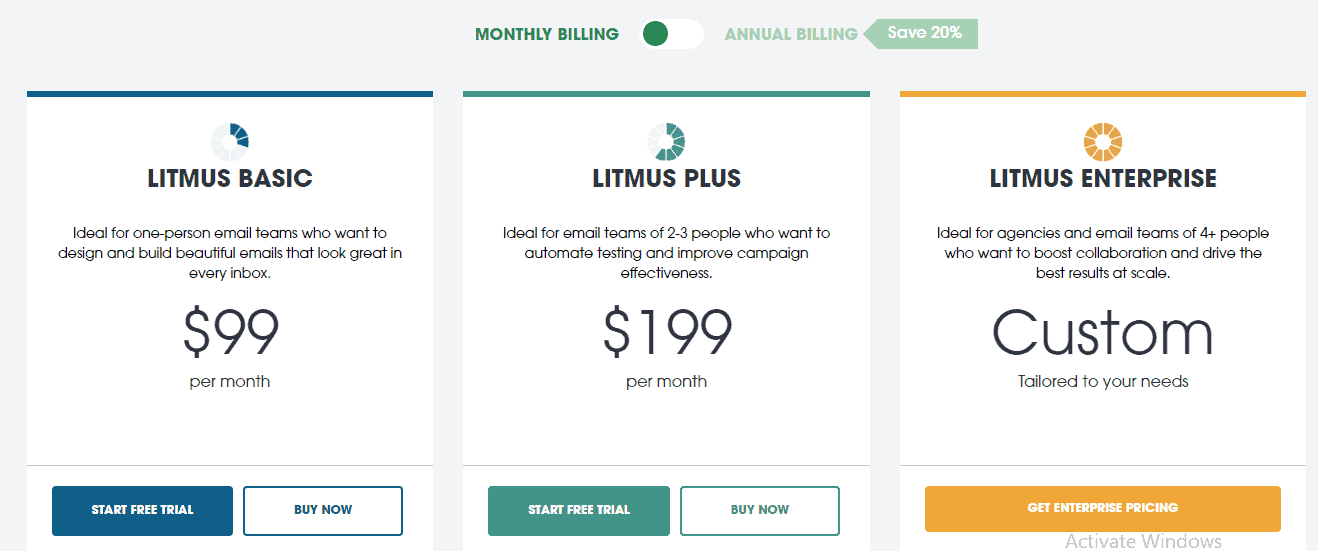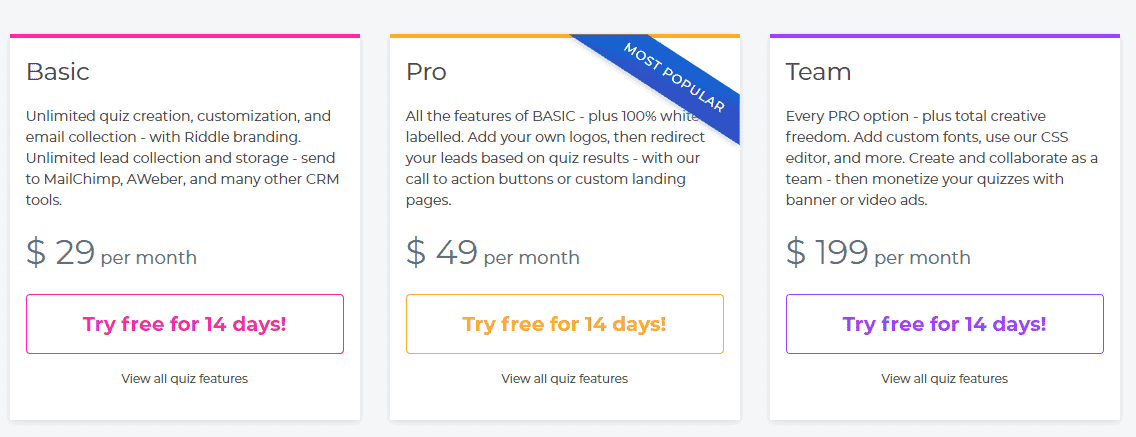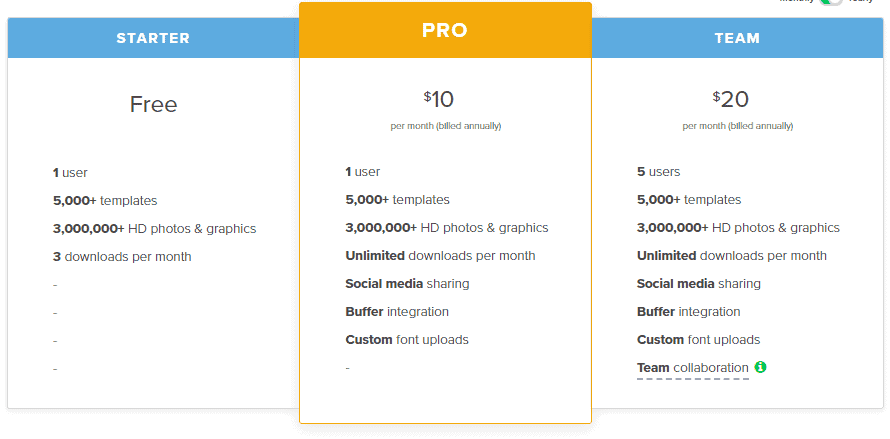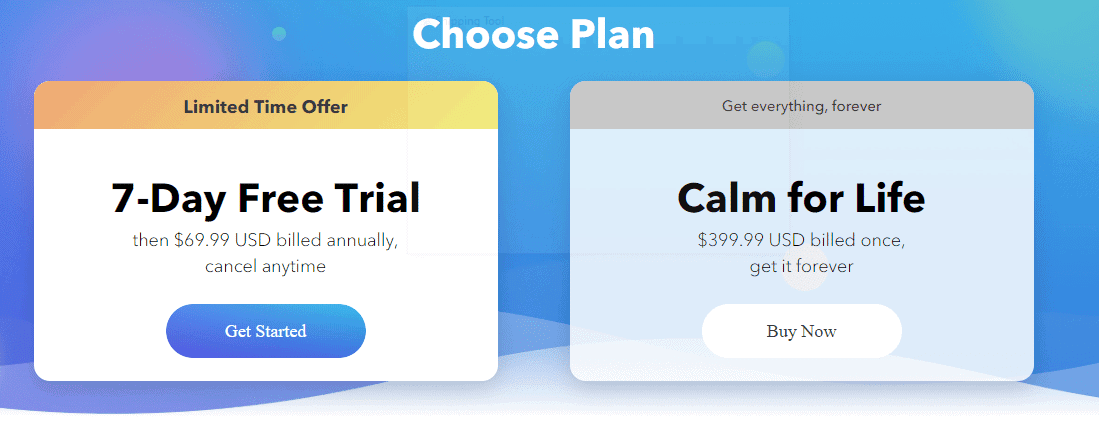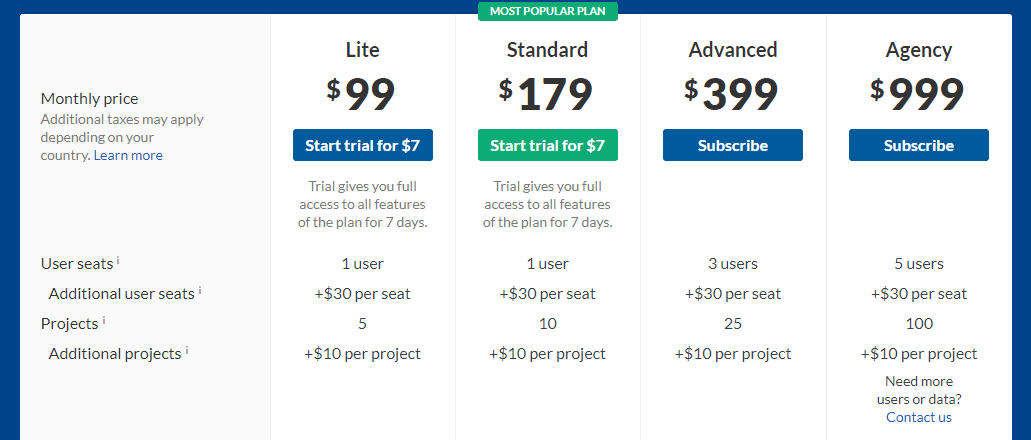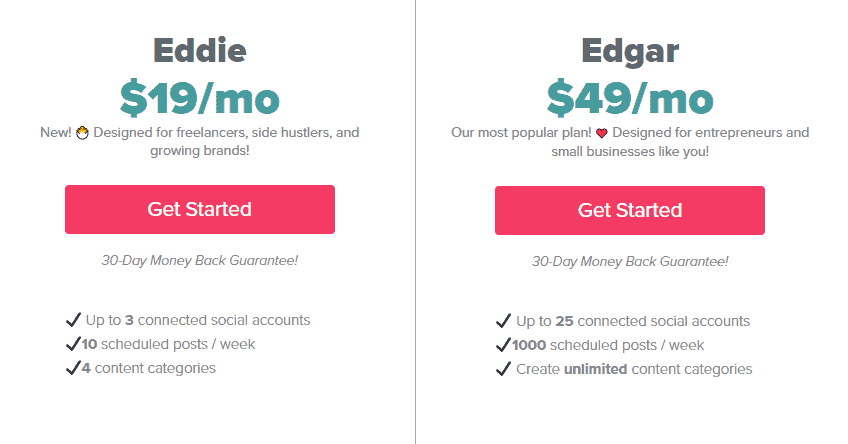Quick Summary :- There are a couple of central issues that characterize how complex the process of pricing is - the unit-economy of your SaaS, your brand positioning (counting packaging and brand value), pricing in itself, and little-known techniques and stunts to set up a cost in an alluring manner. Effective valuing is the premise of rapid development and a gainful plan of action.
When you use traditional software, coming to the correct per unit price to maximize sales and profits is a simple task. The same does not apply to SaaS. Selecting from the various pricing models and strategies is an important task when you are creating a SaaS platform.
The reason why so many people struggle with this is that they face difficulty in striking a balance between the needs of their business and users.
To get rid of this issue, today we’re going to provide you with various SaaS Pricing Model and where they can be the best fit for your business. So, let’s start the show, right now.!
Exploring The SaaS Pricing Models
There are many SaaS pricing models that you can choose for your business. However, to do so, you need to make an informed decision.
The strategy which you like might not be the right one for your company and industry. These pricing models examples will help you go through multiple strategies along with their examples, pros, and cons.
Flat-Rate Pricing
If you are looking for a simple method to sell your SaaS solution, you should go with flat-rate pricing. In this, companies provide a single product, a single set of features, and a single price.
Flat-rate pricing is quite similar to the software pricing models that were used before the existence of cloud infrastructure. The addition in flat-rate pricing is the monthly billing.
Example
A business management software, Basecamp, has included flat rate pricing into its central business philosophy.
Pros of Flat-Rate Pricing
- Effortless sales- When you offer a single product at a single price, your sales and marketing teams can clearly focus on selling a single and straightforward offer.
- Easy to understand- SaaS pricing models can be confusing for customers, but flat rate pricing is a software pricing model that is easy and quick for customers to understand.
Cons of Flat-Rate Pricing
- You could face troubles in getting value from multiple users. If you are aiming for SMBs, then you should use an SMB-friendly pricing strategy.
- As you are offering a single rate, you will get to persuade them only once with your communication. Their answer to use your product will be a simple yes or no as there is not much to consider.
Usage-Based Pricing
These software license pricing models are also known as the Pay As You Go model. In this, the cost of the service depends on the customer’s usage of the SaaS product.
If they use less of the service, their bill decreases, and if they use more, then the bill increases.
This pricing strategy is most commonly used within infrastructure- and platform-related software companies such as Amazon Web Services.
Here, the company bills are based on the number of API requests, transaction processes, or gigabytes of data used. Many SaaS companies are looking for different methods to use this model.
Example
For recurring billing platforms like Chargify, usage-based pricing is a great model. They directly correlate their price with revenue.
With this model, the customers always know how much they are paying for the services and how it changes depending on their consumption of the service.
Pros of Usage-Based Pricing
- The price and the usage of the product are directly proportional to each other. Customers only pay for how much they use. So, it is basically cost per user and usage.
- As there are no huge costs involved, many small companies can use your product. They are always aware, and their usage will impact the billing.
Cons of Usage-Based Pricing
- Sometimes users do not care about how much service they are using. This could result in less usage.
- As the pricing is usage-based, the billing amounts are different every month. This makes the process of predicting revenue difficult.
- The users who use your product aggressively will have to pay more, and they might be shocked to see the monthly bill.
Tiered Pricing Model
In conventional SaaS, flat rate and usage-based pricing are not used frequently. Many companies prefer a tiered pricing model for their SaaS product.
In tiered pricing, companies can provide multiple packages. These packages have a different mix of features at different price values.
The average number of packages can differ, but usually, it is 3.5. It involves low, middle, and high price points.
Example
HubSpot, a SaaS content marketing company, is an appropriate pricing model example. Every tier caters to the requirements and budgets of different types of customers.
These customers could be new to inbound marketing, professional marketers, or marketing teams.
Pros of Tiered Pricing
- With tiered pricing, you can target all segments of your potential target audience as your packages would cater to the needs of various people. When you have a single package to offer, your target audience is limited.
- You can generate as much revenue from multiple types of users as you can target different buyer personas.
- When your customers want to upgrade their plan to use the maximum of your services, they can always upgrade to the next price point.
Cons of Tiered Pricing
- Customers can get confused with various choices available, and this can overwhelm them.
- If the customers using top tier services surpass their service usage, you would not have new ways to collect extra revenue to compensate.
Also Read : 100+ Key SaaS Statistics to Empower Your Business Vision
Per-User Pricing(Pricing will be deducted per user)
Per-user pricing is one of the most preferred SaaS pricing models. According to Pacific Crest’s annual SaaS survey, per-user pricing was the most approved pricing model among the companies surveyed.
The idea behind this software as a service pricing model is simple. A single user uses the service for a fixed monthly price; if another user is added, the price doubles; and similarly, the price is calculated for the number of users using the service.
This helps the customers in understanding their monthly subscription and companies can also manage and predict their revenue.
Example
The road mapping SaaS ProductPlan uses per-user pricing. It is one of the best pricing model examples for per user pricing.
Pros of Per-User Pricing
- One of the easiest and straightforward pricing models. With per-user pricing, customers can easily calculate monthly costs.
- This pricing model lets your revenue grow directly with the adoption of services.
- Companies can easily predict every month’s revenue generation.
Cons of Per-User Pricing
- It can limit adoption when you charge per customer. A single login can be shared between different team members and you will be still charging for just one user.
Per Active User Pricing
Another version of the per-user pricing model is active user pricing. Lots of SaaS companies target the enterprise push for annual billing cycles.
This could be problematic for companies where they have to pay upfront for multiple employees when there is no certainty that the employees would use the software.
With per active user pricing, the customers can sign-up to many users. However, in this pricing software as a service model, they will be only billed for active users.
Example
Slack uses a per active user pricing model and is quite famous for SaaS pricing examples. The customer’s bill would not depend on the number of users registered but on the number of actual SaaS users.
Pros of Per Active User Pricing
- Depending on the number of active users, the bill is generated. This way, the customer’s money is not wasted on inactive users.
- Companies take the chances of registering more users and then with time, they understand how beneficial it is to use the product for the number of users registered.
Cons of Per Active User Pricing
- This pricing is not attractive for small- and medium-sized businesses as this model aims at making the adoption better in enterprise organisations.
When the teams are small, usually there are budget constraints, and using a model like this could turn out to be expensive for the company.
Per Feature Pricing
In the last two SaaS pricing models, we saw that users are being used as the standard variable. What if the models use features as their value metric?
In per feature pricing, prices are divided into tiers based on the functionality present in each tier. The packages with higher price points have more number of features available in them.
Example
Evernote offers its customers three plans: basic, premium, and business. Every package offers different features, and with every package upgrade, customers get access to more features.
Pros of Per Feature Pricing
- Customers are excited to upgrade if they need access to more features as a package upgrade will let them access more functionalities.
- You might need extra resources to provide certain features. When you have a per feature pricing, you can put these features in the top tier package. This will let you get appropriately compensated for the special features you offer.
Cons of Per Feature Pricing
- It can be challenging for SaaS companies to balance the features properly in different packages. If the lucrative features are not available in all packages, then it could hamper adoption.
- If all the essential features are available in the top tier, then customers might get upset as they would not be able to access the product’s features in lower packages. This would make them feel like despite paying for the product, they cannot use some features.
Freemium Business Model
In freemium pricing, SaaS companies provide a free-to-use product along with extra paid packages.
Usually, a freemium business model is offered as a part of a tiered pricing strategy where customers can use the traditionally paid packages along with a free, basic tier.
That tier has its limitations in particular dimensions as they motivate users to upgrade at a certain level of usage.
These limitations could be feature-based (if customers need to access X feature, they would need a paid package), capacity-based (if customers have surpassed the limit of their usage, they would need a paid package), or use-case (customers would be able to use the free package internally but not for handling customers).
Example
Live chat SaaS, Drift, uses freemium pricing. Under their free package, companies can interact with the first 100 contacts without paying any fee. If the demand increases, then they need to upgrade to the paid packages.
Pros of Freemium Business Model
- With freemium, users are more willing to try your product. This increases your product’s early adoption, which is usually a challenge for many SaaS companies.
- This business model lets users refer your SaaS product to their friends and family. This increases its reach.
Cons of Freemium Business Model
- Free users do not contribute to the revenue of your company; hence freemium can negatively impact your revenue. This implies that your paid users should create enough income for both types of users, free and paid.
- When you offer a free product to your customers, they will respect it less than a paid product. This could increase your churn rate. Though with freemium, adoption is higher but so is the churn rate.
- If your users get used to availing services for free, especially the solutions to critical problems, they would not want to pay for them in the future. This can devalue your core service.
Credit-Based Pricing
Credit-based pricing works for products that do not need regular use. Customers can buy credits using two methods: subscription or a one-time transaction. They can then redeem the credits in the app depending on their usage.
Example
The audiobook platform, Audible, has two plans. The plans begin at $14.95/month and offer one credit for a month. It increases to $22.95/month and provides two credits in a month.
Customers can redeem each credit for a single audiobook. They can buy more credits according to their requirements at any time in packages of three.
Pros of Credit-Based Pricing
- Customers become free with this pricing model. They can pay for the service without any concerns about when they will use it.
- Customers do not get bothered by the fact that they are missing special features as they get all features in the credits they redeem.
- When credits are purchased subscription-wise, companies get continuous revenue.
Cons of Credit-Based Pricing
- Customers can request a refund or cancel if they have a lot of credits and they do not use your product that often.
Hybrid Pricing
In hybrid pricing, you can mix and match all the above-mentioned pricing models to create a personalised combination of services.
Example
Drift offers packages that have a combination of users, features, tiers, and other types of pricing models.
Pros of Hybrid Pricing
- Your pricing and plan could be distinct.
- The combination of services you create could cater to customers’ needs in a better way.
Cons of Hybrid Pricing
- The combination of various features, number of users, tiers, freemium. Usage and enterprise models could create a complicated package. Knowing how to price software licensing could sometimes be difficult.
- Customers can get confused in understanding what they will get out of a package. This will make the decision to choose the right package difficult for them.
Per Storage Pricing
Usually, cloud pricing models use per storage pricing. In this, they use a tier pricing model which depends on the amount of storage that customers require.
Generally, these companies first offer a certain amount of storage free. Once the customer gets used to using the product and has used all the free storage provided, they tend to upgrade their storage plan.
Example
With Dropbox, customers first get access to free storage. If they are happy with the services and have used the free storage, they can upgrade to a higher package.
Pros of Per Storage Pricing
- As and when the customers’ storage needs increase, they can select from storage tiers. They do not have to pay for the amount of storage they are using like in usage-based models.
Cons of Per Storage Pricing
- There is a risk that customers who need more than the storage tiers being offered will be excluded.
Roll Your Own
A great way to make your customers feel important and understand their needs is by giving them a choice to customise their service package.
In enterprise pricing models, a variant of hybrid pricing, your customers will have the freedom to select the features they want in their package.
Although this is not a famous SaaS pricing model, the liberty of customisation that customers get can be fruitful for those who are looking for something like this.
Customers get a base price for the core package. After this, they can decide from the add ons and create a package that fits their requirements and price point.
Example
The invoicing and payment solutions firm, Hiveage, allows its customers to choose the additional features they want. They charge a fee for this pro service.
Pros of Roll Your Own
- You can attract different buyer personas as you offer the flexibility to customise the package.
Cons of Roll Your Own
- The choosing, decision making, and purchasing process can lead to confusion in the customer’s mind.
Free, Ad-Supported
One of the ways to attract more customers is to make your product free but keep earning revenue from advertisers who need to communicate with your audience. Usually, these companies have sidebars where they run ads that can attract customers.
Customers can use the product for free, and in return, they see ads in the software. They can eliminate these ads by buying a higher package. It is one of the finest enterprise SaaS pricing models.
Example
The website building company, Wix, is one of the perfect SaaS pricing models examples. The customers can sign up and use the free plan. They can upgrade to the premium, which will remove the ads and provide more features.
Pros of Free, Ad-Supported
- Companies can offer their services for free, and at the same time, they keep earning revenues from advertisers.
Cons of Free, Ad-Supported
- This is usually the lowest tier.
- Customers can get annoyed by the ads.
Volume Pricing
In these pricing models for services, when the total number of purchased units increases, the price per unit decreases.
SaaS businesses usually categorise their product offerings into different tiers. This confuses the customers as they think of volume pricing as tiered pricing.
When the customers purchase more units, the price of all units decreases in a volume pricing model. In a tiered model, after the customers buy a particular amount of units, only then the price per additional unit decreases.
Example
The SEO tool, Moz Pro, implements a volume pricing model. When the customer upgrades to the larger package, the price per unit of every feature reduces.
Pros of Volume Pricing
- Customers can take advantage of this pricing when they are buying the services in high volume.
Cons of Volume Pricing
- This does not play well when the volume and the business are not correlated.
Customised Model
If a particular segment of your customer base wants to utilise your product in a different way than most users, you can choose a customised pricing model for SaaS.
On a one-to-one basis, you can understand your customer’s requirements and what they would pay for the specific services they are looking for.
This way, you can serve your customers according to their individual marketing requirements.
Example
SEO tool, SEMrush, uses the custom pricing model for its enterprise customers.
Pros of Customised Model
- Customers will get all value and functionality for which they have paid.
- Customers will be able to support their business, based on their business’ unique requirements, with the customised package.
Cons of Customised Model
- Customers can compare their packages with others and demand more services if there is a price disparity.
Single Payment
Single payment is one of the reliable software as a service pricing models. In this, companies offer products for a single price point. This is a pay-per-use model that has worked for many online businesses.
In cases where the product is high-priced or is not predicted to create repeat purchases, this model is useful.
This pricing model is easy to understand and compare. Customers can pay individually, and there are no hidden terms and conditions or fees involved.
Example
Stock photography company, Adobe Stock, uses this pricing model. The customers get the option to buy a single photo here.
Pros of Single Payment
- Customers do not have to take the responsibility to make the right choice; hence it becomes easier for them to choose this product.
- Companies can sell and communicate about this product easily.
Cons of Single Payment
- This model does not work well with SaaS products.
- For customers, this option is usually not financially feasible.
Subscription
This is one of the most economical enterprise software pricing models. SaaS Subscription Model helps the companies maintain their cash flow with repeated subscriptions.
Companies enjoy the benefit of a customer’s behaviour (hassle or laziness or forgetfulness) that helps them with automatic renewals.
When organisations know that the customers are not cancelling their services quickly, they can plan their future. Subscription Pricing Models also give them time to work on their customer retention strategy and activities.
Customers might not want to go through the hassle of cancellation, and this will make them use the product for long. Even if they drop out, companies can attract them with a discount or other monetary offers to use the product.
Example
Shutterstock offers its single users the subscription model. Here;s how they decide subscription model pricing for Shutterstock.
Pros of Subscription
- Automatic monthly billing helps businesses with a constant revenue stream.
- Companies enjoy a more substantial customer base.
Cons of Subscription
- Customers might want to cancel, but out of laziness or forgetfulness, they might not cancel on time.
Free, Transactional
In these SaaS licensing models, SaaS companies offer their main functionality for free. They make their money through other transactional ways. These main functionalities which are provided at zero cost, help attract customers.
Example
Wave offers its invoicing and accounting software for free. They earn revenue from processing credit cards and ACH payments.
Pros of Free, Transactional
- This is a useful model for companies who want to make money but without using the subscription model.
Cons of Free, Transactional
- For many companies, making money through subscriptions is a safe way. For them, this model will not work.
How to Determine SaaS Price in the Initial Period Of Business?
Like we have mentioned earlier, your SaaS pricing would continuously evolve. Many companies spend a lot of time and effort on how to price SaaS pricing models even before launching the product. In contrast, they should first prioritise finding the starting point.
- Do not overcomplicate it– You should start with a simple SaaS license model. In the initial days, you will have zero to a few customers, and you would be using customer feedback and insights (market data) to arrive at the pricing decision.
- Be open and flexible– When you start receiving feedback, you will have to go through many opinions about your SaaS pricing. Be open to criticism.
- Test and repeat– You will have to test your theories and repeat your actions multiple times. If you are not getting customers but many signups then you should think about changing the price.
Pricing Calculators
If your customers find your services cheap and are willing to pay more, then you should increase the rates. Keep working on the pricing until you find the right one.
If you are willing, you can try using Louis Nicholls’ price calculator.
How to Choose the Correct SaaS Pricing Model?
When you are choosing a SaaS pricing model template, you need to consider what the data says about your customers. You also need to consider what your customer wants from the product and how your product is creating value in their lives.
Mentioned below steps will help you choose the correct SaaS pricing model:
- LTV/CAC ratio – You should be aware of your LTV/CAC ratio when you are going to select a pricing model. This will enable you to decide if the pricing model will be suitable for your company or not.
- Calculate ROI – Calculate the ROI on your product’s value by thinking about your customer’s requirements and issues, and how your product can make their life simpler.
- Collaborative Pricing – Pricing should be done collaboratively. You should include all contributing teams like Marketing, Sales, Product, and Management.
- Market Segments – Develop necessary pen portraits and create market segments for the services that you provide.
- Competitor analysis – You should know where your company stands with its competitors and do an analysis of the same.
- Easy Onboarding – Learn more about your customers’ onboarding and buying process. To make the onboarding process more simple to understand and easy to execute, you can offer an explanatory video or guide, video call, or a webinar.
Valuing Customer Service & Feedback
To make sure that your customer is not facing any hurdles in the buying process, you can analyze all of the actions that they perform when they are purchasing your product.
- If your customer is facing any problem with the product, they should have easy access to customer service.
- Also, define your pricing metrics that depend on the product you sell and the industry you are in. Some standard metrics for SaaS are priced by functionality, user, and tier segmentation.
- You can offer a free trial to see how your customers interact with the product. Only if you are sure that your customers will like your product and buy it after using it in the free trial, then you should give this option to them.
If your customers do not purchase the product after using it for free, you can revise your product’s features that your customers prefer and make them a part of the free trial package.
Mistakes While Calculating SaaS Pricing
These are the three common mistakes you may make while calculating SaaS Model Pricing. You can learn from these and understand where you might go wrong.
- Avoiding Pricing – It may be a lengthy process, but it must be done. It would be best if you go through competitors’ pricing but never copy them. If you copy prices, you can face limitations in growing your business and making profits based on the value that your product is offering.
- Not Hiking Rates – If you do not hike the rates, you could fail. When you add more value to your product, you start investing more. When your customers are okay with paying more for ‘no more problems’, then you should ask them about the problems they are facing.
- Not Valuing Customer Feedback– You could be asking them wrong discovery price questions. It would be better if you ask them the right questions about their willingness to pay. After asking these questions, you should test the answers immediately.
Analysing the SaaS Pricing Strategies
The pricing model of your SaaS business is its backbone. It is responsible for sales and creating revenue for your company. Within your pricing model’s framework, you will have various goals to achieve your business’ growth objective.
SaaS pricing strategies play a significant role to help you achieve your ultimate objective. These strategies can be used according to the goal that you are trying to accomplish, such as expanding to a new market segment or targeting a particular set of the target audience.
Penetration Pricing
When companies decrease their prices to increase the rate of adoption and get the first-mover advantage, the pricing strategy is called penetration pricing.
This way, companies can get more hold on the market share before their competitors come into the picture and start attracting customers.
In these software pricing strategies, SaaS companies generally decrease prices to unsupportable low levels in short- to medium- term.
Their target is to recover from this in the long term when they plan to upsell and cross-sell their customers more profitable and revenue-generating services. The services pricing models plays an integral role in this.
Many companies have utilised the land and expand the strategy to penetrate the market successfully with their new ideas. This has helped them stay ahead of their competitors. Examples include companies such as Slack and New Relic.
Captive Pricing
Captive pricing is also known as captive product pricing. In this, the companies offer their fundamental product for less price. They increase the fee for additional products that are necessary to get the most productive results from the fundamental product.
For example, consider using graphic design software at an economical price. To make attractive designs, the users will have to download stock imagery (the captive product) from the company’s stock photography service.
For example, Adobe provides the older versions of their software for free. With time they compel the users to switch to a high-priced paid version of the software if the users want to get the most out of the software.
Skimming Pricing
Skimming pricing is also known as promotional pricing. In this strategy, the companies charge a high price in the initial stage of a new product. With time, they decrease the cost of the product.
The customers who are early adopters are willing to pay a high price for the product that has the latest technology. Even if the product’s fee represents the value, it might or might not be creating in the customer’s processes, the customer still pays the high price.
In due course, the companies decrease the prices to follow the product demand curve and generate interest in more price-sensitive customers.
Apple is known for launching innovative products at high prices and then cutting the costs after some time. Customers still pay the high charges for the latest technology though they are aware of the fact that prices will reduce in upcoming months.
The early buyers get to use new products, and Apple benefits from the short-term higher profit margins.
Prestige Pricing
In prestige pricing, also known as premium pricing, the companies use the approach of keeping the prices high, which implies that the product is of high quality, exclusivity, or luxury.
With this strategy in place, companies keep a smaller customer segment consisting of high-value customers. These customers value the opulence they feel with the brand, and they would not prefer the brand to reduce the prices.
SaaS companies can use prestige pricing according to their reputation. If the company is a famous brand, and prominent companies use the product, then the company can use eminent status to charge higher for products.
SaaS development agency can provide a premium service or tier to their customers. They can include the best and most exciting features, excellent account management, and special acknowledgment for being a premium customer.
Free Trial Pricing
Free trials have high popularity in SaaS pricing strategies. They work well for both customers and the company. When companies offer the product for free, they get a chance to reach out and cater to a broader audience.
This also helps them understand the customer’s behaviour while using the product, which can lead to great insights for future strategies. Many famous Product Pricing Models use it..
In return, the customers get to use and experience the product for free, and this helps them understand how much value this product is adding in their processes.
Without paying for the product, customers get the advantages in the trial phase. This usually leads to them upgrading to the paid version when the free trial ends.
Companies usually offer free trials for a limited period which is generally 30 days. Some companies do it by providing limited features such as five free design downloads or two video files.
Companies offering free trials have to work on a solid follow-up strategy to ensure that their customers do not drop out after the free trial ends.
Cost-Plus Pricing
Cost-plus or cost-based pricing is the beginning of many SaaS companies when it comes to their pricing strategy. This is very company-centric.
It is usually based on limited information, and many companies use it to price their products in the initial phase of business.
This involves consideration of processes like development, packaging, marketing, and selling the product. All of these processes require time, effort, resources, and money.
In cost-plus pricing, companies add a profit margin to the cost of processes mentioned above. This becomes the price of the product that the customer receives.
Cost-plus pricing does not involve many factors that affect pricing, such as the considered value of the product, customers’ price sensitivity, or competitor pricing, among others.
Value-Based Pricing
Value-based pricing is the opposite of cost-based pricing. It uses the perceived value of the product as the driving factor in determining the price of the product. It does not account for development costs, competitors, or target margins.
This pricing strategy makes the SaaS companies consider the value they provide to their customers. They put their effort into understanding the customer, how their product is offering value, how the customers use the product, and improving their service to provide better value. They also set the price that their customers are willing to pay.
Companies spend a lot of time in developing their value-based pricing. Many of them consider the 10x rule when they want to move to value-based pricing. It is the concept where they aim to provide value ten times more than the price of the product.
Competitor-Based Pricing
In these SaaS pricing model examples, a SaaS company will use its competitors’ pricing as the benchmark for their pricing. They go through what their competitors are charging the customers and then accordingly set their prices.
Based on how well their customers have priced their products, they will take relevant guidance and make their pricing strategy.
This strategy can work great for start-ups as they might find it hard to calculate the value of their product. They also might not have relevant data to use in the creation of the pricing strategy.
Diving Into Psychological Pricing Strategy
So you have chosen your SaaS pricing model and strategy, but the job is still not done yet. You need to pick a psychological pricing strategy to complete your work.
This will make the job perfect. These are small level experiments that will help you improve and maximise your pricing.
Some psychological pricing strategies can be deceptive in nature and not suitable for customers. You must choose an approach that is right for the company and customers.
The objective is to increase the competency and make your sales as productive as they can be.
Price Anchoring
For many customers, price is a relative concept for many items they are about to purchase. The customer would calculate the value and judge the cost of an item by using a reference point.
If you are buying a shirt, you would compare the price with the other shirts you like, or if you are purchasing a laptop, you would compare the features and price of all laptops in that range.
You might even increase your price limit while making this comparison. This is precisely what price anchoring does. It acts as a trigger to increase your customer’s desire to spend.
Example
CRO SaaS Convert effectively uses price anchoring to attract customers on their pricing page.
Even their most economical package, Essential, costs $599/month if billed annually. Very cleverly, they highlight their Pro plan, for $799/month, at the centre of the page highlighting it as the most popular plan.
They even list down features of both plans so that prospective customers can easily compare them.
How to Use This Strategy in SaaS?
- Highlight your most expensive package on your pricing page. It is all right if most of the page visitors do not buy it. It will become their reference price point.
When users compare the other packages to this package, the other packages will seem more economical.
- Whenever you are upselling or cross-selling, you should always pitch your most pricey add-on or upgrade. Then you move to your relatively more moderate price options.
Charm Pricing
Charm Pricing means using the price of products or services that end with number nine instead of zero at the end such as $99, not $100, or $29 not $30.
This psychological pricing strategy is a hit because of the left-digit bias. It means that our brain reads from left to right. So, subconsciously we will think that there is a massive gap between $29 and $30 as the former starts from 2 and the latter begins with 3.
Our brain will use $3 as an exact, subconscious reference point in $30. But in the case of $29, our brain will create an inaccurate reference point of $20.
Rationally we are aware that we are not buying a product in the range of $20, but charm pricing has been a hit in improving and increasing sales and conversion rates.
Example
Many SaaS companies use charm pricing, such as IFTTT
How to Use This Strategy in SaaS?
- Consider two prices, such as $50 and $49. To check conversion rates for these two round figure monthly subscriptions, run an A/B test.
Odd-Even Pricing
Odd-even pricing and charm pricing Models For SaaS are based on the same principle of reducing the prices by a few dollars so that the price is closer to the rounded price point.
In charm pricing, the costs end with 9. In odd pricing, the prices end with odd numbers such as $27, $37.67, or $43.
Charm pricing is a widespread psychological pricing strategy, whereas odd-even pricing is not frequently used. Many customers have become more conscious of charm pricing strategy.
With odd-even pricing, SaaS companies can still trigger their customers’ left digit bias. They are willing to price their service at $57 and give a chance to increasing conversion rates.
Just like odd pricing, the same principles apply to even pricing where companies price their products ending with even numbers such as $58, 26.24, or 32.
Example
Virtual assistant SaaS, Zirtual, uses an even pricing strategy.
How to Use This Strategy in SaaS?
- Analyse your competitors’ pricing strategy. If more players in your industry opt for charm pricing, you can go for odd-even pricing.
- Run an A/B test to see how your conversion rates and sales revenue get impacted by odd-even pricing.
Product Bundle Pricing
When you offer various products for a single price, it is the product bundle pricing. Usually, when companies offer a bundle price, they offer every component product at a lesser price than its worth.
The advantage of the bundle pricing is, it motivates customers to buy products that are difficult to sell when done individually. This pricing does lead to an increase in the overall profit.
Product bundle pricing can make your complicated sale processes easy. This works great when customers can use multiple apps and add-ons for a fuller experience.
It also makes the customers think about the value addition a whole bundle can do compared to a few individual products.
Example
A brilliant and prevalent example of the product bundle pricing is Microsoft 365. Customers can get a monthly subscription of service. They get all the apps included in the package and no option to pick from these apps.
How to Use This Strategy in SaaS?
- When you offer individual products, you can try to provide them as a single bundle. This can help in increasing the sale and usage of more niche products by selling them with more conventional products.
High-Low Pricing
In high-low pricing, a product is initially sold at a premium price, and with time, it is offered at a low, discounted price. This pricing strategy is frequently used in the retail industry. In SaaS, some companies have adopted this strategy.
The price of the product is used as an anchor to increase sales. In the early stage, the product is considered premium because of its price. Hence, when the price drops or discount is applied, the customer perceives the reduced price as a great deal. This encourages them to buy the product.
Generally, a high-low pricing strategy works for the short term. Long term discounting could affect the customer’s behaviour towards the services. If companies often offer discounts, the customers would start waiting for the price drop, and this could impact the company’s sales.
Example
The most common example of high-low pricing in SaaS is the Black Friday sale. Companies who usually do not involve themselves in the discounting business also decrease their prices to attract a customer who is willing to pay in the spirit of purchasing.
How to Use This Strategy in SaaS?
- Whenever you use high-low pricing, you should use it smartly. Your customers need to look at the discounts as great deals which are not frequent.
Trial Pricing
In trial pricing, companies offer their SaaS product at a lesser price for a limited time. This is generally a part of an introductory offer.
In the standard free trial, trial pricing is not free, and the customers pay a fee that is lesser than the standard cost.
With this pricing, companies can influence their customers to buy the product at a lesser fee. When the customers get used to the product and can see the value it brings in, companies increase the price.
As the product is valuable and already tried, customers generally do not mind paying the increased rate when the trial has expired.
Example
Salesforce provides free trials for all of its plans.
How to Use This Strategy in SaaS?
- The trial you offer should always be free. Trial pricing has the same risks as high-low pricing and discounting. Lesser sign-ups and conversion rates are additional downsides.
Analysis Paralysis
Analysis paralysis pricing involves companies providing too many options to choose from.
When you need your customers to go through a lot of options, they would not be able to retain information about all of them. This would hamper their decision-making and result in lesser sales.
After a certain point, the number of options available and decision making becomes inversely proportional to each other.
Example
Intercom offers many products along with various variables that affect pricing such as features, teammates, messages, and people reached, among others.
Customers would appreciate these bundled packages, but at the same time, they will have to navigate through many options to choose the right one.
How to Use This Strategy in SaaS?
- Always keep the number of your packages low. With a lesser number of packages, your customers would be easily able to compare them and decide the option they want to choose.
Decoy Pricing
In decoy pricing, companies set unessential pricing or pricing that is less attractive than the other products. This motivates the customers to ignore what they do not need at the moment, and they can easily focus on the remaining products, which will be more useful to them.
Example
The stock imagery company, Shutterstock, uses decoy pricing.
How to Use This Strategy in SaaS?
- You can use decoy pricing to offer particular packages.
Centre Stage Effect
The centre stage effect means having a psychological inclination towards the middle option among three options presented to the customers. This could be due to the mindset that people have that the middle choice is the average choice.
This middle option is between the first option and the last option which could be small and big, or cheap and expensive. People could consider choosing the middle option as the safest option or an amalgamation of the first and last option.
Example
In SaaS, the centre stage effect is often used as it yields excellent results.
GatherContent smartly uses this pricing strategy to their advantage.
How to Use This Strategy in SaaS?
- When you are providing three packages, with the help of some visual effects, you should highlight the most popular package to make it stand out from the rest.
Positioning
Positioning is a tactic you use to influence your customers and create a unique buying proposition that makes your product stand out in the market.
You can use pricing as a positioning strategy to differentiate your services from those of competitors. This can be really effective if your services tightly compete with your competitors.
The three major price positions companies use are:
- Low-cost: This is the most economical solution that you can offer to differentiate from competitors.
- Best-value: In this, you can provide maximum features to create value for customers.
- Premium: This is the most thorough and relatively expensive solution.
The low-cost positioning is used to charm bargain-hunters, beginners, and price-sensitive buyers. The best-value option makes you stand on the middle ground between prices and features.
It communicates to your customers that they can get the best features with affordable pricing. The premium option is for high-end customers who do not compromise on price.
Example
Mailchimp’s Standard plan is perfect for start-ups and price-sensitive businesses.
How to Use This Strategy in SaaS?
- You can position yourself based on features you provide or your pricing, whichever is more attractive to your customer base.
Discounting
Discounting as a pricing strategy should be used very intelligently. It can push your customers to buy your services or can make you lose money in revenue compared to the lifetime of the customer with you.
Example
Apple provides education pricing to college students and their parents, faculty, staff, and homeschool teachers of all grade levels.
How to Use This Strategy in SaaS?
- You can offer special discounts to customers to upgrade to a higher-priced plan. Your customers will get more value out of the higher-tier plan and would appreciate your gesture of offering a discount on upgrading.
- Do not provide lifetime discounts. Go for monthly (for a few months) or one-year discounts.
- While offering discounts, ask them to spread positive word of mouth about your product by using a referral, or sharing their positive experience with your product on social media.
- You can offer scaled discounting for annual plans.
Perks
In perks, SaaS companies offer a combination of services like a free consultation, a free book, or discounts on add ons. These perks can be highly valuable for customers.
Localisation
SaaS companies understand that the value they set for their service would not be applicable in all currencies. The cost has to be based on the market and geography, and not currencies. This pricing strategy is called localisation.
Customers should be able to justify the cost they are going to pay for the value they are getting from the service. They would not pay if the price is wrong in their currency and not right from a geographical point of view.
Example
Litmus offers different plans at different price points in different countries.
How to Use This Strategy in SaaS?
- Based on customers’ willingness to pay in each market, you should derive your pricing.
- You should ensure that your prospective customers see the pricing in their currency.
Making A Recommendation
This practice needs companies to be highly ethical as some SaaS companies highlight a plan or product to create an influence on the product.
This recommendation to other customers should be based on real data and not because the company wants to push it to prospective customers.
Example
Riddle highlights its most popular plan on their pricing page.
How to Use This Strategy in SaaS?
- The Most Popular: You can highlight the most popular plan because most of your customers go for it.
- The Best Value: Mention why a specific plan offers the best value and provide an explanation backed by data.
- The Recommended option: Here also you need to explain why you are recommending this particular plan. This will help your customers make a decision.
Analysing The Activation Models
The activation model is the method by which a user starts using your product. There are several activation models like a freemium, free trial, or demo which we would discuss now.
The activation model is a part of the packaging. It is the method of presenting a product to customers to sell it.
When you consider physical products, packaging can include designing packages, labelling, protection, and wrapping. In SaaS, packaging takes care of the purchase process and terms.
Choosing the right pricing model, along with the right activation model, will help you with getting new customers.
Freemium
In the freemium model, customers get a free version of your product. This free version is available to them for lifelong. Freemium is a great lead generation tool.
With freemium, it becomes easy for the customers to experience the product and see the value it brings in. Customers can easily upgrade to paid versions to get more out of the product.
With the right marketing, this model can be effectively used to attract a large pool of customers. This is an excellent advantage of this model.
You can also use a robust referral program along with the freemium model. With a broader user base, it will be easier for you to experiment and support customer acquisition and growth strategy.
There are also certain downsides to the freemium model. SaaS companies usually notice fewer upgrades from a free to a paid version.
Free customers can also use more of your support and engineering and offer nothing in return. Companies even lose on chances to get customers who would have paid for the product but are happily using the free version.
Best Suited for Products That
- Target beginner-level users
- Add more value the more customers use them
- Can manage high technical and support costs
- Use customer experience to market the product’s value
Example
Snappa gives out many great features in their free plan. This makes the users sign up, use, and regularly use the product.
Free Trial
With the free version model, SaaS companies offer a version of their product for free and for a limited period. Companies that provide free trials ask for a customer’s credit card at two stages.
Either they can ask at the stage when the customer is signing up or they can ask when the free trial ends, and it is time to upgrade to a paid plan. Both ways have their own advantages and disadvantages.
When you ask for their credit card at the beginning, it can increase your lead quality and decrease your sign up rate. When a customer provides their card, it implies they are interested in continuing the service if they like it.
If you have a large number of sign-ups not upgrading to the paid version and occupying your resources, you can use this method to get more reliable users.
When you do not ask for the credit card at the beginning, the customer does not have to show commitment to you. This could be a great way to get more users to experience your product. This way, you can also draw more users towards your product
Best Suited for Products That
- Customers need to experience and judge before making the buying decision
- Are simple and require less guidance to use
- Can not be overused or abused for the wrong reasons
- Shows the value it can add during the trial period
Example
Calm offers a free week to make a habit of meditation.
Paid Trial
Customers get to use a version of the product for a particular fee and for a limited time in a paid trial. Some companies also refer to them as “Pilots.”
Users usually pay a fraction of the amount of the regular subscription fee. The duration of the paid trials can be a couple of days, a week, or a month, depending on how the company wants to set it.
Best Suited for Products That
- Customers need to experience and judge before making the buying decision
- Are simple and require less guidance to use
- Can not be overused or abused for the wrong reasons
- Show the value it can add during the trial period
- Give away too much value in the free trial
- Need to tested to check the scope of the product’s usage
Example
Ahrefs uses paid trials to let the users experience the product.
Money-Back Guarantee
In the money-back guarantee model, SaaS companies offer their product for the full or discounted price along with the assurance to issue a refund if the customer cancels the subscription within a specific period.
With this model, you will get more committed users and constructive feedback from them. It eliminates the people who are not interested in your product, giving you more time to come up with effective strategies to target them.
Best Suited for Products That
- Are simple and require less guidance to use
- Can show too much value it can add during the free or paid trial
- Are priced low enough so that the customer does not mind losing the money
- Can demonstrate the apparent value and functionality during the duration in which customers uses it with a money-back guarantee
Example
MeetEdgar uses the money-back guarantee model.
Consultation
In the consultation model, a meeting, discussion, or a demo is required before the user can start using the product. The consultation can lead to one of the activation models mentioned above or create a customised activation model for the customer.
After a consultation, the user can get a free trial, a paid trial, a money-back guarantee, a setup fee, a signed contract, or an activated paid subscription.
With this model, the companies get the advantage of not publishing pricing and creating a price point that suits the customer’s requirements.
They also get feedback from the customers that helps them in designing the price point. It is also a great way to establish a relationship with users, handle their issues, and understand them better.
A disadvantage to best SaaS pricing pages is that users can face more time and commitment to the SaaS company.
Best Suited for Products That
- Need a demo or training to understand the value
- Requires considerable time in decision-making
- Needs extensive setup or commitment
- Are expensive
- Need a fundamental shift in the process
- Have a great customer lifetime
- Have many products packaged together
Example
Superhuman uses the consultation model.
Metrics For Tracking SaaS Pricing Models
Once you have decided on your SaaS pricing strategy, pricing model, pricing model templates, and psychological pricing strategy, the last and final step is to get metrics to track your SaaS pricing model.
They will help you know the profitability and usability and enable you to track and examine how customers are receiving your pricing model.
LTV/CAC Ratio
When you are working on your pricing model, you need to consider the Lifetime Value (LTV) and Customer Acquisition Costs (CAC) ratio. The reason being, this ratio helps you in creating a profitable business model.
You need to have a ratio of greater value than one between these two parameters. This will ensure that you do not lose money on every customer you acquire. When the LTV/CAC ratio is lower, it indicates the duration which the customer pays you back, and this could lead to a loss for your business.
When companies take no notice of this ratio, they start losing money with every new customer that gets onboard.
Gross MRR Churn Ratio
Gross MRR churn is the percentage of lost revenue because of the cancellation of the product’s license or downgrades. It gives an approximate value of the company’s loss in percentage.
To get this value, you need to divide the total MRR churn (for the month) and total MRR (for the month) and multiply the answer by 100.
Gross MRR churn = total MRR churn/ total MRR x 100
For small businesses, the gross MRR churn should be ideally between 2% and 2.5%. For enterprise companies, it should be around 1%.
If a company’s gross MRR churn is higher than 5%, it implies that cancellation and downgrades are making them lose a significant part of the revenue.
Expansion MRR
The ratio which informs us about the revenue generated by add-ons, upsells, and cross-sells is Expansion MRR. It indicates if you can provide and add more value to your customer.
It is calculated by subtracting the total expansion MRR at the beginning of the month from the total expansion at the end of the month, divided by the total MRR at the beginning of the month, and multiplying the resultant by 100.
Expansion MRR = Total expansion MRR at the end of the month-total expansion MRR at the beginning of the month/total expansion MRR at the beginning of the month x 100
Total expansion MRR is the indicator of how current customers generate more revenue and value to your product, hence creating more demand.
When the MRR ratio is high, it indicates sustainable growth as it lessens the new CAC cost, and simultaneously generates increased revenue. This leads the ways to good business health.
Upgrade MRR
This is similar to expansion of MRR. This usually focuses only on upgrades and is relevant to subscription-based businesses.
When an existing customer upgrades from a lower to higher plan as they require more functionality and features, it is called the upgrade MRR. It is calculated by subtracting the cost of the higher plan with the cost of the existing plan.
Upgrade MRR = Cost of the upgraded/higher plan – Cost of the existing/lower plan
Upgrade MRR is an indicator of the number of customers that choose for advanced features and hence upgrade to a higher plan. You can motivate your customers to upgrade by adding new features and functionalities to the product.
If this value stays low, it means that you are providing high value for a low price. This is the time to reevaluate your pricing strategy.
Conclusion
You need to consider all the information and repeatedly question your strategies and plans to find the right pricing strategy and model. Pricing is not a one-time activity, and it should be amended regularly.
It should grow with your product and represent the value you create for your customers. We hope with this extensive guide, you would be rightly able to develop your SaaS pricing model and strategy.
Frequently Asked Questions
How To Select A Pricing Model For SaaS Offering?
The selection of SaaS pricing models depends on a variety of factors and criteria for the business. They are as listed below:
Suitability
Payment
Flexibility
Cost Impact
LTV/CAC Ratio
Buyer Personas
How To Calculate SaaS Pricing?
There can not be a fixed price for SaaS pricing. There are a variety of factors that you need to take into consideration while calculating the cost.
Customer Value
Pricing Models
Customer’s Lifetime Value
Sales Model
Test Pricing
Platform
Project Cost
Budget
How To Accomplish Value-Based Pricing In SaaS Model?
There are some things that you need to consider in order to accomplish the value-based pricing in SaaS. They are as follows:
Identifying the target market
Finding the price of best alternative available
Calculate your product’s worth
Determine the performance difference
Add those value in your product
Generate maximum revenue
Customer Value
Pricing Models
Customer’s Lifetime Value
Sales Model
Test Pricing
Platform
Project Cost
Budget
How To Develop A SaaS Pricing Model?
There are some steps that you need to follow in order to develop a SaaS pricing model. They are as follows:
Determining business goals
Conducting market research
Analyze the target audience
Competitive analysis
Creating a pricing strategy
What Are Two Main Varieties Of SaaS?
The two main varieties of SaaS are Horizontal and Vertical. While Vertical SaaS fulfills the needs of a specific industry, Horizontal SaaS focuses on a particular software category.
How To Define The Audience For SaaS Model?
If you're someone who has a presence in the market, then you create segments based on your customer base.
How To Define ROI Of Your SaaS Model?
The ROI of the SaaS model can be calculated by this formula: SaaS ROI = (MRR/Cost) * 100
Here, MRR = monthly recurring revenue for the given period
Costs = CAC customer acquisition costs or CRC customer retention costs
What Metrics Are Taken Into Account For SaaS Business?
The key metrics for SaaS business are listed as follows:
- Customer Churn
- Revenue Churn
- Customer Lifetime Value
- Customer Acquisition Cost
- CAC:LTV Ratio
What Is The Difference Between Free & Freemium Model?
The free model provides customers partial or complete product free for a limited time period, while the freemium model provides access to a certain portion of the software free of cost without any time limit.
